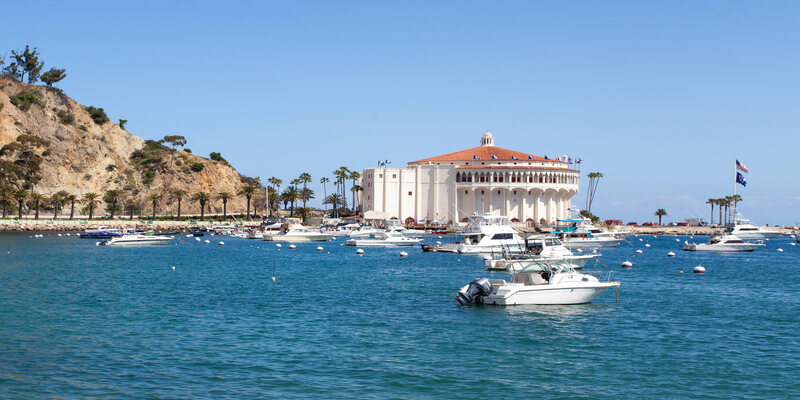Vietnam, a nation famous for its deep history and cultural inheritance, has many sacred temples and pagodas that are important spiritually as well as historically. These places, ranging from old architectural wonders to worship spots people hold in high regard, show some of Vietnam's strong traditions and beliefs. In this article we will look at ten of the most holy temples and pagodas you should see if you want to explore the spiritual core of Vietnam. It is an exciting country with a great deal of character.
1. The Temple of Literature in Hanoi
The Temple of Literature, found in Hanoi, is a significant historical and cultural place for Vietnam. It was established back in 1070 during the time of the Ly Dynasty to function as a temple following Confucian beliefs. After that, it turned into the initial national university. The temple setup is well-known for its calm courtyards, old stelae, and stunningly maintained architecture. You can appreciate the beautiful gardens and read about Vietnam's educational history from the stelae. They are messages written to honor scholars who succeeded in passing royal exams.
- Tip: This site is particularly crowded during Vietnamese festivals, so plan your visit during off-peak times for a quieter experience.
- Note: Photography is allowed in most areas, but be respectful of ongoing ceremonies and avoid using flash.
2. One Pillar Pagoda in Hanoi
Just a little distance from the Temple of Literature, you will find an equally famous landmark called One Pillar Pagoda. It was constructed in 1049 and stands on a solitary stone pillar that holds up a small shrine shaped like a lotus flower. This special arrangement represents purity and illumination. The pagoda was built by Emperor Ly Thai Tong and it is now a landmark of Hanoi. Although this structure was destroyed in the French colonial period, it has been carefully reconstructed to keep its traditional design and importance intact.
- Tip: The best time to visit is early morning or late afternoon to avoid large tourist groups and enjoy a peaceful atmosphere.
- Note: Be mindful of the local customs and traditions when visiting, and dress modestly.
3. Tran Quoc Pagoda in Hanoi
Tran Quoc Pagoda, a significant place for religious worship, is located in Hanoi on the. shoreline of West Lake. It holds a long history and remains one of Vietnam's oldest pagodas since it was constructed during the 6th century. The pagoda has an impressive octagonal design. stretches to thirteen stories high, with every level decorated by detailed carvings and holy items. Tran Quoc Pagoda is not just a magnificent architectural structure; it also holds great spiritual importance for Vietnamese Buddhists. This place, with its calmness and stillness, is like a sanctuary away from the noise of city life.
- Tip: Visit during the early morning or late afternoon for the best lighting and fewer crowds.
- Note: Respect the sacred space by not touching the religious artifacts and keeping noise levels down.
4. Thien Mu Pagoda in Hue
Thien Mu Pagoda, situated in Hue, is a key Buddhist temple recognized for its history and religious importance. It was set up by Nguyen Hoang who started the Nguyen Dynasty back in 1601. This pagoda can be found on the riverside of the Perfume River. The seven-floor tower, referred to as the 'Phuoc Duyen Tower,' is located within it and acts as a representation of Vietnamese Buddhism. The ground is groomed and guests can take pleasure in the sights of the river and its nearby environment.
- Tip: Combine your visit with a boat trip on the Perfume River for a more comprehensive experience.
- Note: Check for any local ceremonies or festivals as they can offer additional cultural insights.
5. Ba Na Hills Pagoda in Da Nang
The Ba Na Hills Pagoda, found in the Ba Na Hills near Da Nang, is a mix of nature's charm and spiritual importance. The pagoda complex can be seen as part of a big resort area that includes cable car rides giving a view of this region. The most prominent characteristic here is the Giant Buddha statue which looks very impressive on top of one hill. The place is well-liked because it offers a mix of religious moods and stunning sights nearby, such as mountains and sea.
- Tip: The cable car ride provides stunning views, so consider taking it either early in the morning or late in the afternoon to avoid long lines.
- Note: Wear comfortable shoes as there is a lot of walking involved, and prepare for varying weather conditions.
6. Chua Linh Ung Pagoda in Da Nang
One more important pagoda is the Chua Linh Ung Pagoda, which can be found on Son Tra Peninsula in Da Nang. This pagoda is particularly famous for having a big Buddha statue that reaches 67 meters high. Because of where it's located, people can enjoy oy beautiful sights of Da Nang City and the nearby coast from this pagoda. The Linh Ung Pagoda is a place where many people go on pilgrimage and also for visitors to reflect and get blessings.
- Tip: Early morning visits provide the best opportunities for photos and less crowded conditions.
- Note: Respect local customs and avoid climbing on or touching the Buddha statue.
7. Vinh Nghiem Pagoda in Ho Chi Minh City
Vinh Nghiem Pagoda, which is situated in Ho Chi Minh City, is a significant Buddhist temple recognized for its magnificent construction and cultural value. The pagoda was established during the initial 1960s and it was built according to traditional Vietnamese architectural style with one big main hall plus many smaller shrines around it. This pagoda serves as a place where Buddhists carry out their religious activities and cultural celebrations. It attracts people due to its spiritual atmosphere as well as its involvement in community affairs.
- Tip: Attend one of the temples cultural events to experience local traditions and practices.
- Note: Be mindful of the temple's operating hours and any specific guidelines for visitors.
8. Jade Emperor Pagoda in Ho Chi Minh City

The Jade Emperor Pagoda, located in Ho Chi Minh City, is one of the most respected temples found in southern Vietnam. It was constructed during the early years of the 20th century and devoted to the Jade Emperor who holds a significant role within Taoist belief as being its supreme deity. The temple's detailed carvings and statues symbolize different deities and characters from Taoist mythology. The serene courtyard and intricate indoor design contribute to its importance as a spiritual place for the community and visitors alike.
- Tip: Try to visit during weekdays to avoid the weekend crowds.
- Note: Observe the local worship practices and avoid interrupting ceremonies.
9. Hang Luoc Pagoda in Hanoi
Hang Luoc Pagoda is a very old temple, found in middle Hanoi and built during the 11th century. It's famous for its history-filled structure and calm environment. People from the local Buddhist community use this place to pray and meditate. The pagoda's history and its look that follows old ways of design are crucial for people who wish to see Vietnam's religious legacy.
- Tip: Visit during quieter times of the day to fully appreciate the tranquility of the temple.
- Note: Respect the quiet atmosphere by keeping conversations to a minimum and not using flash photography.
10. Phuoc Duyen Pagoda in Hue
Phuoc Duyen Pagoda, also called the Pagoda of the Pure Dharma, is placed in Hue and is recognized for its calmness and historical importance. The pagoda has a typical architecture style including one central shrine that's devoted to Buddha. It's a location for peaceful thought and spiritual action, attracting people who want to take part in Vietnams deep-rooted Buddhist customs.
- Tip: Combine your visit with a tour of nearby historical sites for a richer experience.
- Note: Ensure to follow any local guidelines on attire and behavior while visiting.
Conclusion
These holy temples and pagodas give a rich immersion into Vietnam's spiritual and past scenery. Every place offers a special viewpoint on the country's abundant cultural legacy, making them crucial stops for those who want to learn about Vietnams sacred customs.












